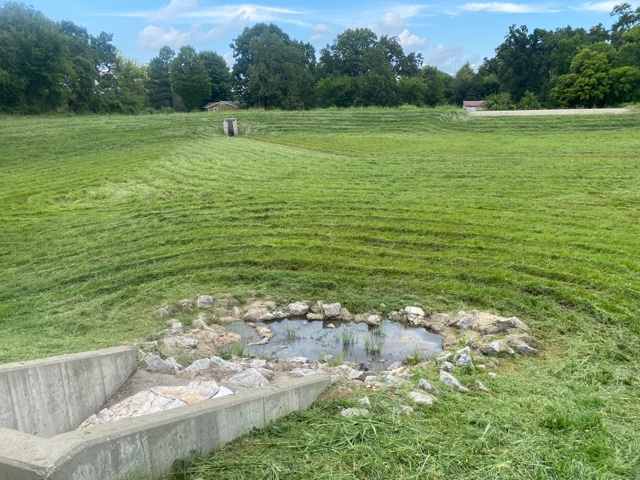How SCMs Improve Water Quality
By Erin Grenz, Chief Development Officer
Stormwater runoff can carry pollutants, such as sediment, nutrients, heavy metals and chemicals into our water bodies. These pollutants can harm aquatic ecosystems and compromise water quality. Stormwater Control Measures (SCMs), also known as Best Management Practices (BMPs) provide effective and sustainable solutions to mitigate these issues.
As rain falls onto Earth’s surface it is either absorbed into the ground and is stored until it is released into surface waters (the hydraulic cycle) or tapped for human use, or it becomes runoff, most often caused by urbanization. As our nation continues to develop and urbanize, impervious surfaces like concrete block the natural processes of water. SCMs are designed and implemented on properties to both store and treat the stormwater runoff, mimicking the natural processes of infiltration, evaporation and transpiration.
SCMs play a crucial role in improving water quality by intercepting, filtering and treating runoff before it reaches streams, rivers and lakes. To reduce pollution, the EPA has established minimum expectations nationwide. States and local municipalities can then implement and enforce more stringent regulations. Techniques like constructed wetlands, biofiltration systems and retention ponds effectively remove pollutants, allowing cleaner water to enter natural waterways. By implementing these practices, communities can protect local water resources, enhance biodiversity and promote healthier ecosystems.
SCMs are installed at any development of a property that disturbs one acre or more of land. There are various functions and qualities that are chosen to operate on each site specifically based on water quality standards in the state or municipality, weather patterns, available space and amount of potential runoff.
To comply with regulations, your site may have multiple SCMs working together as a treatment train. SCMs are installed for various reasons, which are identified during the engineering and design phase, and may be better suited for specific functions like sediment removal, nitrogen removal, water storage or peak runoff reduction. Together these SCMs ensure compliance on your site.
Common SCMs include retention and detention ponds, wetlands and swales. These assets are engineered with soil that allows water to infiltrate the ground, providing ground water recharge. Many SCMs utilize sunlight to facilitate evaporation and vegetation to facilitate denitrification. Denitrification is a chemical process of plants absorbing nitrogen and converting the pollutant into the atmosphere. As nitrogen is the most prevalent stormwater pollutant, removing it in this natural way is extremely beneficial.
SCMs act as a natural substitute for underground pipes. They offer water quality benefits as well as storage to avoid flooding. SCMs must be maintained and inspected, just like underground infrastructure, but are more easily maintained as they function above ground. As a property owner, you may be eligible for stormwater credits or financial incentives from your local municipality to improve water quality. In your local municipality, there may be minimum expectations of water quality leaving a property. Learn more about stormwater management expectations in your area here.
Get in touch with a stormwater expert today to learn more about how stormwater is managed on your site.
